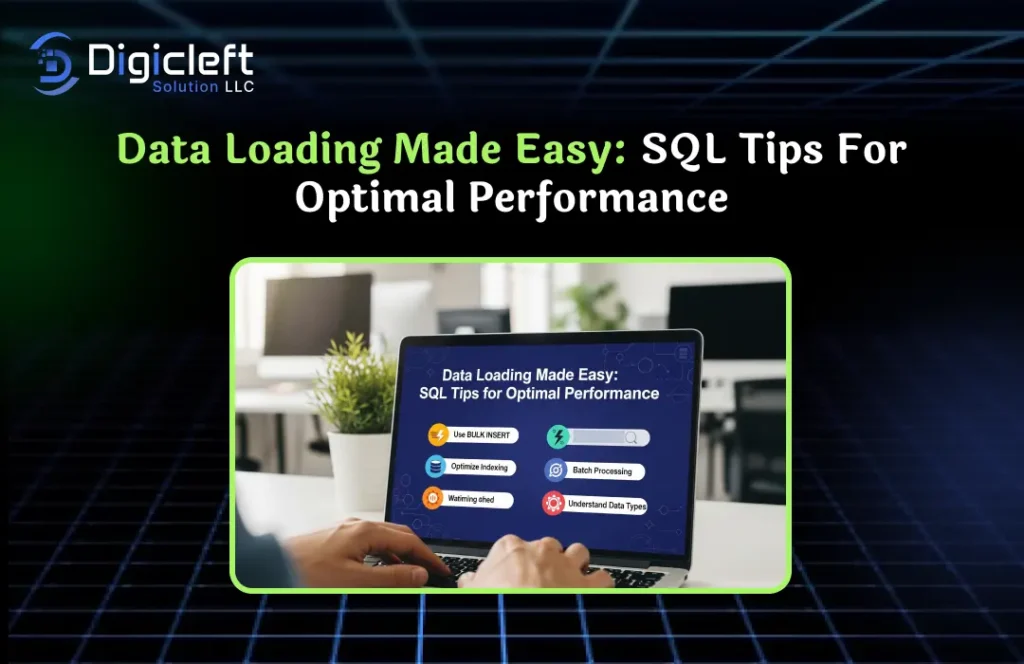
When you’re working with massive datasets, every second counts. Slow data loads can delay reporting, analytics, and even break production systems. Let’s face it no one likes watching a progress bar crawl. That’s why understanding how to optimize SQL for faster data loading isn’t just a “nice-to-have”; it’s a survival skill.
Why Data Loading Matters in Modern Applications
Whether you’re building an e-commerce platform or an AI-driven dashboard, fresh and accurate data is your lifeblood. Imagine making decisions on outdated figures it’s like driving while looking in the rearview mirror. Speed matters.
Common Backups Developers Face
- Too many indexes on a table
- Improper use of transactions
- Slow disk I/O or memory limitations
- Overcomplicated SQL scripts doing row-by-row inserts
Understanding SQL Data Loading Basics
What Is Data Loading in SQL?
Data loading is the process of importing or transferring large volumes of data into a database. It could be from flat files, APIs, or other databases.
Key Performance Metrics to Watch
- Throughput: Rows per second loaded
- Latency: How quickly a batch completes
- Resource Utilization: CPU, memory, and disk I/O impact
Preparing Your Database for High-Speed Loads
Indexing Strategy When to Add or Drop Indexes
Indexes speed up reads but slow down writes. During bulk loads, consider dropping non-critical indexes and rebuilding them afterward.
Using Partitions for Large Data Volumes
Partitioning helps divide big tables into smaller, more manageable chunks, reducing overhead during loads.

Optimizing SQL Queries for Loading
Bulk Insert vs. Row-by-Row Processing
Always use bulk insert operations where possible. Row-by-row inserts are like filling a swimming pool with a teaspoon.
Using Stored Procedures for Efficiency
Stored procedures keep logic inside the database engine, cutting down on network overhead and speeding up execution.
Managing Transactions During Data Loads
Choosing the Right Transaction Isolation Level
Using higher isolation levels may prevent dirty reads but can also cause locking. For large data loads, try lower isolation levels to keep things moving.
Minimizing Locking and Deadlocks
Load data in smaller batches, and make sure your table operations don’t conflict with other processes.
Hardware and Server Considerations
Memory and Disk I/O Optimization
Faster SSDs and sufficient RAM can turn a sluggish load into a lightning-fast process.
Parallel Processing and Multi-Threaded Loads
Modern database engines support parallel execution. Use it to split workloads and push multiple threads simultaneously.
Best Practices for Data Cleaning and Validation
Pre-Load Data Scrubbing
Clean your data before it even hits the database. Garbage in, garbage out.
Post-Load Integrity Checks
Verify row counts, constraints, and checksums after loading to ensure everything loaded correctly.
Tools and Automation for Faster Data Loads
Using ETL Tools vs. Manual Scripts
ETL tools like Talend, Informatica, or SQL Server Integration Services can streamline the process, but custom scripts give you finer control.
How Digicleft Solution Implements Automation
Digicleft Solution uses automated pipelines to validate, clean, and load data without manual intervention. Their approach combines bulk operations with smart partitioning, cutting load times dramatically.
Real-Life Use Cases and Lessons Learned
Performance Gains in Enterprise Applications
Companies that switched from row inserts to bulk inserts often saw speed boosts of 10x or more.
Common Mistakes to Avoid
- Leaving unnecessary indexes enabled during loads
- Not monitoring resource usage
- Using single-threaded processes for massive datasets
Conclusion
Optimizing SQL for data loading isn’t rocket science it’s about knowing which levers to pull. By using bulk inserts, tuning indexes, cleaning your data, and automating the process (like Digicleft Solution does), you can turn tedious operations into smooth, efficient workflows.
FAQs
- What’s the fastest way to load data into SQL? Bulk insert methods and partitioned tables generally give the best performance.
- Should I drop indexes before loading data? Yes, dropping non-critical indexes during bulk loads speeds things up. Rebuild them afterward.
- How can I avoid locking issues during data loads? Load in smaller batches and use lower isolation levels if consistency requirements allow.
- Is parallel processing always better? Mostly yes, but it depends on hardware resources. Over-parallelization can overwhelm servers.
- Do ETL tools outperform custom SQL scripts? ETL tools save time for complex workflows, but custom SQL scripts offer maximum control.


